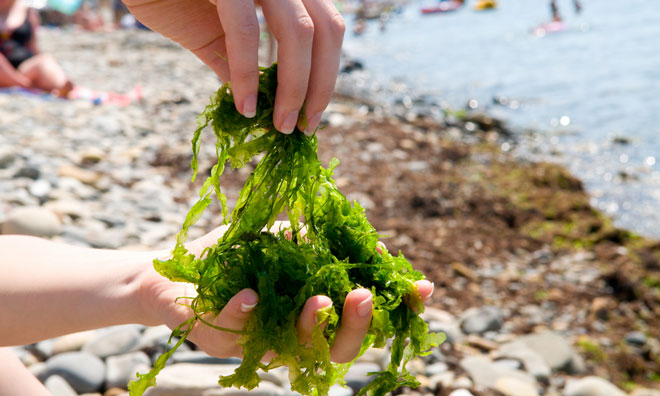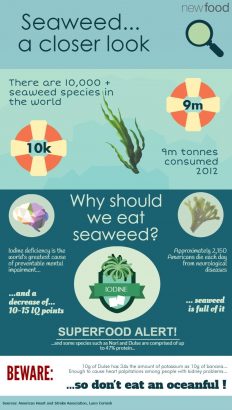Edible seaweed: A closer look…
- Like
- Digg
- Del
- Tumblr
- VKontakte
- Buffer
- Love This
- Odnoklassniki
- Meneame
- Blogger
- Amazon
- Yahoo Mail
- Gmail
- AOL
- Newsvine
- HackerNews
- Evernote
- MySpace
- Mail.ru
- Viadeo
- Line
- Comments
- Yummly
- SMS
- Viber
- Telegram
- Subscribe
- Skype
- Facebook Messenger
- Kakao
- LiveJournal
- Yammer
- Edgar
- Fintel
- Mix
- Instapaper
- Copy Link
Posted: 10 October 2016 | Roy Manuell, Digital Content Producer | No comments yet
New Food takes a closer look at the health benefits of edible seaweed with a cool, new infographic. Rich in protein, fibre and crucially iodine, there seem to be many reasons why you should try edible seaweed…


What is seaweed?
Edible seaweed are algae that can be consumed and used in the preparation of food. They typically contain high amounts of fibre and are a complete protein.
Health benefits
However, seaweed is rich in a vital, but rare, element: Iodine.
With mental health issues on the rise and cognitive deficiencies such as Alzheimer’s disease affecting millions and costing states billions of dollars a year, iodine deficiency is thought to lead to the enlargement of the thyroid and mental retardation in infants and children whose mothers were iodine deficient during pregnancy.
Relative to other foods, seaweed contains an exceptional level of iodine.
Did you know?
Seaweed has been a part of national cuisine in China, Japan, and Korea since prehistoric times.
Often served in western Chinese restaurants, ‘Crispy Seaweed’ is not actually seaweed but instead cabbage that has been dried and then fried.
Japanese cuisine has an outstanding seven types of seaweed identified by name, and thus the term for seaweed in Japanese is often used in scientific applications, and not in reference to food.
For a closer look click here to see our infographic in full:









